
What paint? And how?
29 Jun 2016
Paint can go anywhere, right? Yes… mostly, as long as you use the right product, paint or paint system.
The Resene technical expert gets many queries about painting different surfaces, from tiles, to metal, to floors and furniture.
Here are some of your questions and his answers.
A dining table
Q. I want to paint my dining table white. What paint will work over stained wood? Do I sand first and prime then paint?
A. Assuming the timber has a clear varnish over the stain, the following system can be used to give a solid paint finish:
Use Resene Interior Paintwork Cleaner to ensure the surfaces to be painted are clean and free from grease; pay particular attention to hand contact areas.
Apply a thin coat of Resene Waterborne Smooth Surface Sealer and allow to cure without water contact for at least 48 hours.
Apply two coats of Resene SpaceCote Low Sheen, using a roller – ask the staff at your Resene ColorShop for the best roller sleeve to use.
The new paint system will take five days to develop good initial adhesion, then another three weeks to cure properly so don’t use cleaners or be too rough with the table during this time.
Old cane furniture

Q. Can I use Resene Walk-on flooring and paving paint to paint old varnished cane furniture or should I use something different?
A. You will need to apply a coat of Resene Waterborne Smooth Surface Sealer first then you can apply any Resene waterborne topcoat to suit the end use.
Kids’ toys
Q. I want to paint some kids’ blocks with Resene testpots. What kind of paint is in these testpots and is it safe for kids’ toys?
A. The paint used in Resene testpots is a Resene Environmental Choice approved paint (friendly to people and the environment), so is safe for toys. After painting, leave the blocks to dry for two weeks then wipe down with warm water and a cloth before adding them to the toy box.
A kitchen splashback
Q. Can we use Resene Write-on paint as a backsplash by putting it over a painted wall behind an induction cooktop? Can any colour and/or brand of whiteboard markers be used and easily cleaned off?
A. Yes, Resene Write-on paint can be used this way. Pental MaxiFlo is Resene’s preferred brand of whiteboard marker.
A timber floor
Q. I would like to paint the matai floor of our bathroom black. What is the best product to use? And will we need to seal it after the paint?
A. Apply a primer coat of Resene Quick Dry primer undercoat then two coats of any Resene Uracryl 400 Series paint. There’s no need for a sealer coat after that.
Kitchen cabinets
Q. How do I paint white laminate cupboards in my kitchen?
A. Use Resene Interior Paintwork Cleaner to make sure the surfaces are clean and free from grease, paying particular attention to hand contact areas. Apply a thin coat of Resene Waterborne Smooth Surface Sealer and allow to cure without water contact for at least 48 hours. Then apply two coats of Resene SpaceCote Low Sheen tinted to your chosen colour. Roll all coats using the recommended roller sleeve. The new paint system will take five days to develop good initial adhesion and continue to cure for another three weeks. Don’t use cleaners or scratch the surface in this time.
Powdercoated metal
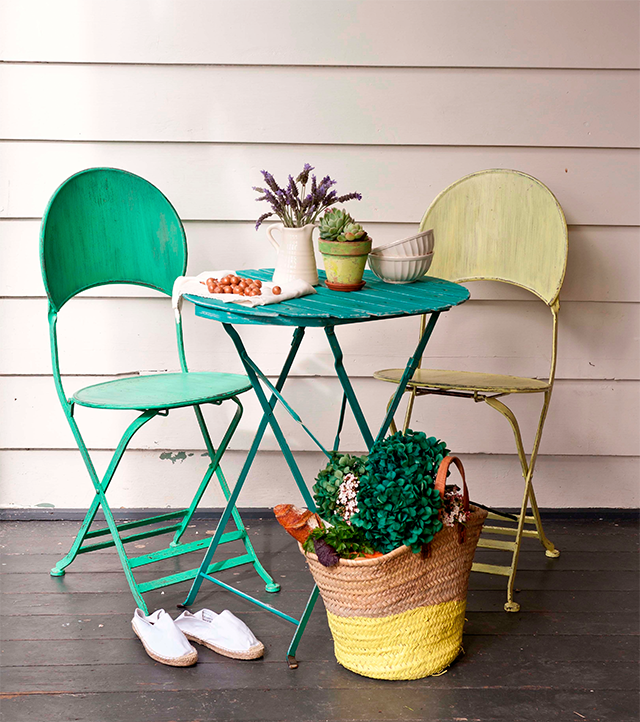
The not-so-naked truth about painted furniture
Q. Is there a paint system that can be applied over powdercoated metal?
A. Use Resene Interior Paintwork Cleaner to ensure the surfaces are clean and free from grease, paying particular attention to hand contact areas. Apply a thin coat of Resene Waterborne Smooth Surface Sealer and allow to cure without water contact for at least 48 hours before overcoating. Then apply two coats of Resene SpaceCote Low Sheen or Resene Lustacryl.
The new paint system will take five days to develop good initial adhesion and continue to cure for an additional three weeks until full cure occurs.
Old metal fretwork
What do you recommend as a primer/rust inhibitor for old cast iron lacework?
A. We recommend Resene Rust-Arrest. Then you would topcoat in Resene Super Gloss tinted to your chosen colour.
Bathroom tiles
Q. Can I paint over some old 1960s ceramic tiles in my bathroom (both vertical and horizontal)? Some of these tiles are in the shower area so will get wet frequently. The vanity top won't get that wet. How can I make the paint last as long as possible without being damaged by either water or scratches?
A. I wouldn’t recommend painting the shower tiles but the following method can be used for the others:
Use Resene Interior Paintwork Cleaner to ensure the tiles are clean and free from grease, paying particular attention to hand contact areas.
Apply a thin coat of Resene Waterborne Smooth Surface Sealer and allow to cure without water contact for at least 48 hours. Then apply two coats of Resene SpaceCote Low Sheen with a recommended roller sleeve. The new paint system will take five days to develop good initial adhesion and continue to cure for another three weeks. Don’t use cleaners or anything abrasive during this time. Note that painting will not reproduce the original features of the tiles.
A trailer
Q. We want to paint a large trailer box made of marine ply and need maximum weather protection from rain etc. The colour will be a dark army green.
A. We recommend two coats of Resene Quick Dry primer undercoat and two coats of Resene Sonyx 101 using a CoolColour™ version of the colour.
Outdoor terracotta tiles
Q. What paint would I use on terracotta tiles? They are outside, unsealed and subject to foot traffic.
A. Ensure the tiles are clean, then apply a seal coat of Resene Sureseal, then finish with two coats of Resene Walk-on.
An old aluminium garage door
Q. I am painting a 30-year old aluminium garage door which is oxidised. What prep will I need to do?
A. You will need to apply Resene Roof and Metal Wash as per the label instructions, then rinse clean with fresh water, prime with Resene Galvo One primer and apply two coats of Resene Lustacryl semi-gloss waterborne enamel tinted to your chosen colour.
A baby’s cot
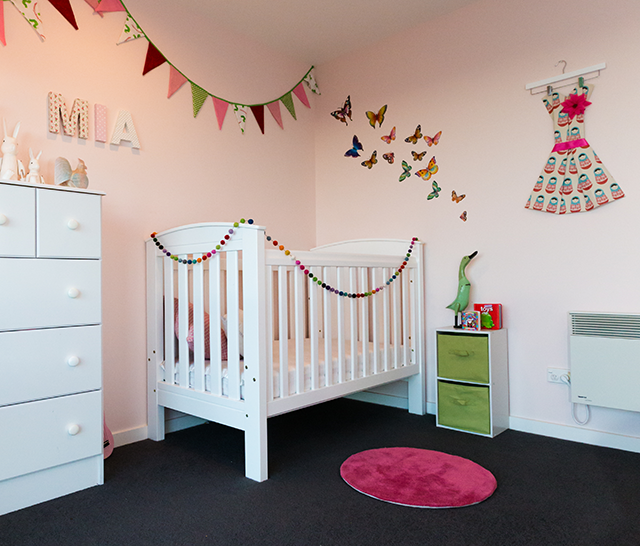
Annabel and Simon bring coast to the country
Q. I want to paint a baby cot that is already painted. Can I use enamel paint? I was told that if I use zero VOC paint it wouldn't stick to the old paint.
A. Sand the existing paint work then apply a coat of Resene Quick Dry waterborne primer undercoat and finish with two coats of Resene Lustacryl waterborne enamel (both are Environmental Choice approved paints). Leave to cure for at least two weeks in a well-ventilated area then wipe down the cot with warm water and detergent before using it.
A workbench top
Q. I have just built a workshop bench using 18mm MDF as the bench top. I am looking for hard-wearing paint for my MDF workbench that will seal, and take knocks and hammering.
A. MDF is a relatively soft material and even when painted there is a limit to what a paint system can contribute to abrasion resistance and impact damage. The best system would be two coats of Resene Quick Dry waterborne primer undercoat, allow the last coat to cure for 48 hours then apply three coats of Resene Uracryl 403 tinted to your chosen colour.
Corroded metal
Q. What would you recommend as the best method to deal with corrosion on exposed metal surfaces in an area prone to salt air, high humidity etc (coastal environment)?
A. In coastal environments, sheltered surfaces that don’t get washed by the rain can start to corrode. The performance of the paint will be largely dependent on the thoroughness of this surface preparation. Follow these steps:
· Clean any areas of moss or mould with Resene Moss & Mould Killer, diluted at the rate of 200ml to 1 litre of clean water. Leave for up to 48 hours to achieve full kill. For heavy infestations, you may need to re-apply.
· Scrub down using Resene Paint Prep and Housewash and rinse clean with fresh water. Apply a liberal wash of this mixture to the surface with a nylon bristle brush or broom. Thoroughly scrub the surface to ensure complete removal of all grease, moss and mould residue, and any other contaminants. Rinse clean or hose down with fresh water to make sure all salts are also removed.
· Remove all areas of white corrosion material and as much red rust as is practicable using mechanical methods such as a 3M Rust and Paint Removal Disc.
· Apply two coats of Resene GP Metal Primer to the prepared substrate and topcoat with a Resene exterior acrylic paint.
· Wash the surface once a year to remove accumulated salts.
Do you have a technical question about paint? Click here for help.
Published: 29 Jun 2016





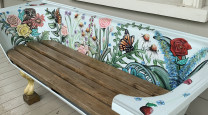
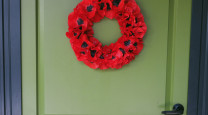
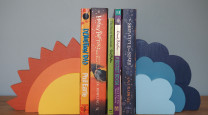

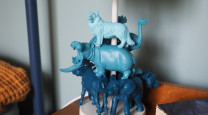



 look book
look book